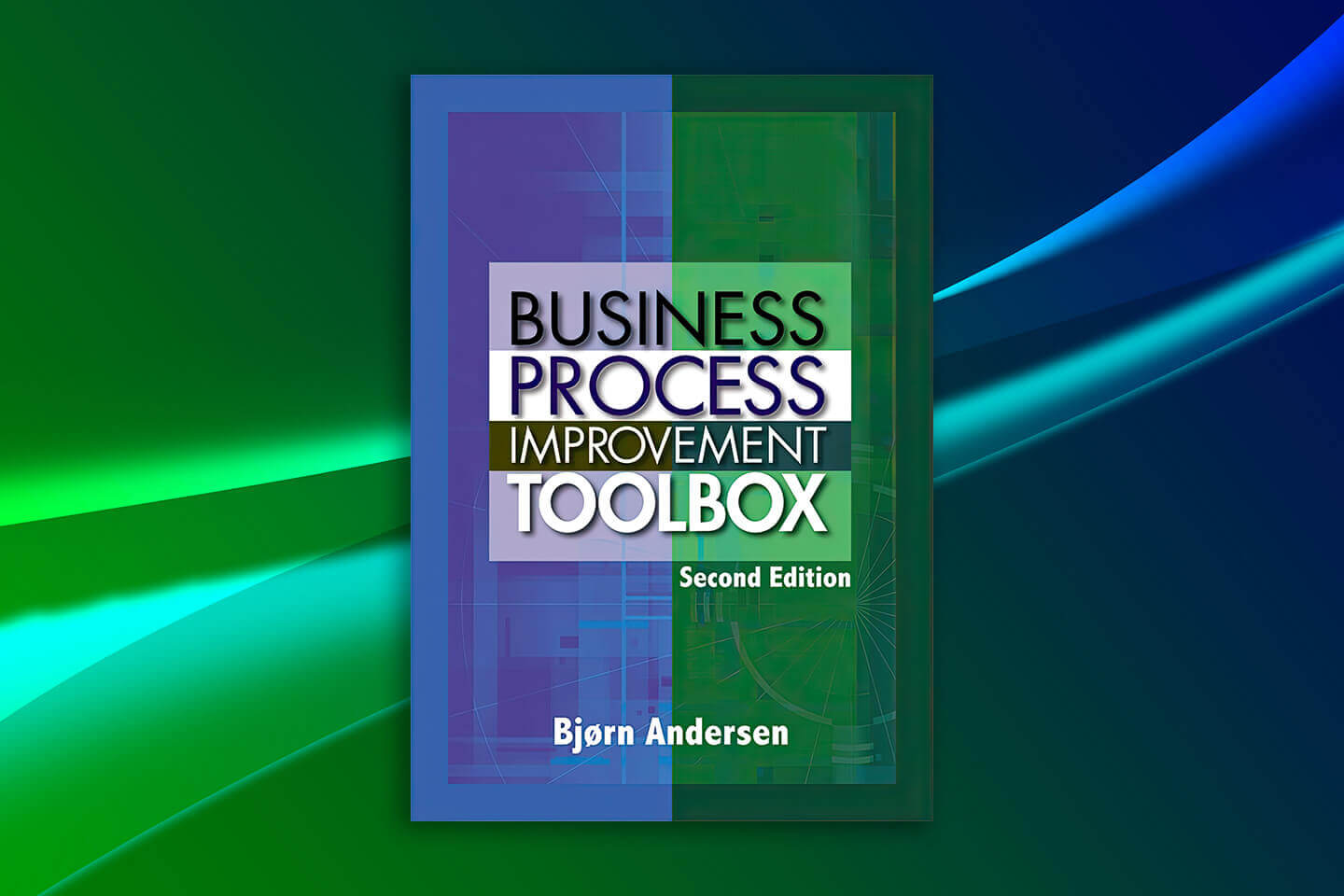Business Process Improvement Toolbox
Bjorn Anderson
A Book Review
Business Process Improvement Toolbox explains an overall process improvement framework, presents the tools in sequence for this framework, and then concludes with one overarching case demonstrating the use of all the tools in a concerted effort. As a result, you’ll learn how tools fit together and how they can be used in a coherent process improvement system.
The text begins by explaining how workflows across an organization through business processes. The author defines three types of business processes,
1. Primary processes are the value-creating processes of the enterprise.
2. Support processes are the secondary processes that support and enable the primary processes.
3. Development processes bring the value-creating processes to a higher performance level.
Workflow should be structured into a series of business processes that deliver value for the organization.
The text introduces the Plan, Do, Check, Act cycle, originally defined by Deming, as the foundation for all organizational improvement. The author categorizes process improvement tools based upon the following criteria.
Tools for Prioritizing.
Improvement begins by documenting processes, which can be achieved through a variety of flowcharting methods. Process measurement follows whether it be effectiveness, efficiency, quality, time or cost. This provides the ability for process assessment that leads to self-discovery.
Tools for Problem Understanding
These tools include flowcharts for process documentation, the critical incident technique to identify process improvement, check sheets for collecting data, and Pareto charts to define what is important.
Tools for Problem Analysis
These tools include cause and effect charts to identify possible causes of a problem, root cause analysis, commonly known as the “why-why” chart, to find the “true” root cause of a problem, scatter chart, which shows the relationship between two variables, histogram to show variation of data, relations diagram, which shows the cause and effect relationships in a complex situation and finally, the matrix diagram, which shows the strength of relationships.
Tools for Idea Generation
These tools include brainstorming, to find possible solutions, the nominal group technique, to render the preferred choice from a group of possible solutions, and the affinity chart, whose purpose is to create relationships among many ideas.
Tools for Improvement
These tools include streamlining to trim waste, idealizing toward a future state design, quality function deployment to connect process outputs with customer desires, work unit analysis to establish product/service specifications, statistical process control to establish process capability, business process re-engineering to redesign a business process, and finally, benchmarking to assess process performance against peers.
Organizational Tools
These tools include cross-functional teams to overcome organization silos, problem-solving teams to solve specific problems, quality circles to solve problems within a work area, and concurrent engineering to improve product development processes.
Tools for Implementation
These tools include ADT analysis to set ambitious improvement targets, the tree diagram to define project tasks, the process decision program chart to consider negative events while planning, and force field analysis to evaluate change potential,
Business Process Improvement Toolbox
This book provides clear step by step directions and describes an improvement process that can be used in real life. Whether for quality novices or more experienced professionals, the examples used are from a full range of organizations including manufacturing, service and public institutions.
Reference
Anderson, B. (1999). Business Process Improvement Toolbox. Milwaukee WI: ASQ Quality Press.

